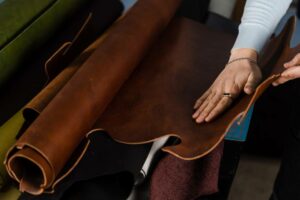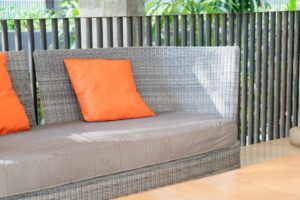Navigating the debate around tarpaulin vs canvas is paramount across various industries in Malaysia.
This is because both tarpaulin and canvas have unique characteristics that make them suitable for specific applications, whether in agriculture, construction, or design.
In this article, we explore the features that are offered by these two materials to help you make informed decisions about the right protective cover for your business.
What are Canvas and Tarpaulin?
1. Canvas
Canvas, a material traditionally made from natural fibers such as cotton or linen, is well-regarded for its robust and durable texture.
It has diverse applications, notably in arts, sails, and tents, owing to its versatile nature.
Moreover, the strength and breathability inherent in canvas make it a material of choice for various uses.
2. Tarpaulin
In contrast, tarpaulin is manufactured from synthetic materials like polyester and nylon.
To enhance its durability, it is often coated or laminated with substances such as PVC or polyurethane.
This augmentation positions tarpaulin as a preferred material for heavy-duty applications like truck covers and outdoor shelters where resilience is vital.
Read More: Fabric for Sofa: Ultimate Guide to Selecting the Best Material
Tarpaulin vs Canvas: Comparing the Pros & Cons

1. Tarpaulin
Tarpaulin stands out for its remarkable durability against external factors, offering exceptional resistance to wear and tear.
Moreover, its water resistance renders it particularly well-suited for the frequently rainy and damp conditions often encountered in Malaysia.
Additionally, its ability to withstand various chemicals enhances its longevity across a wide range of applications, making it an ideal choice when robustness is paramount.
Nonetheless, tarpaulin has its drawbacks. These include a tendency to fade when exposed to direct sunlight and limited breathability compared to canvas, owing to its plastic components.
Tarpaulin is also not suitable for extremely cold weather and, due to its synthetic composition, is less eco-friendly and less sustainable than alternative materials.
2. Canvas
On the other hand, canvas is a champion of eco-friendliness due to its composition of natural and biodegradable materials. This fabric promotes breathability, facilitating airflow and preventing condensation.
What’s more, canvas offers moderate water resistance, making it suitable for shielding against light rain and splashes. Treated varieties are also available for added protection.
However, the material is prone to tearing and fading when exposed to continuous sunlight due to the lack of UV protection.
Plus, in extended periods of high humidity, which are common in Malaysia, canvas can be prone to mildew growth.
Tarpaulin vs Canvas: Industry Applications

1. Tarpaulin
In Malaysia, tarpaulin is a staple in agriculture, used in irrigation ponds and for protecting crops or machinery from rain.
The marine industry employs it for fishing gear and covers for boats or marine equipment. It’s also indispensable in construction for weatherproofing and creating temporary shelters or barriers.
2. Canvas
Canvas, with its distinct properties, is widely utilised in art and design as painting canvases. Additionally, the transportation industry employs it as a durable covering for trucks and vehicles.
It is also a popular material for making tents and shelters for camping and outdoor activities.
And in the construction sector, canvas holds value for crafting worker tents, primarily due to its exceptional breathability and comfort.
Read More: Your Comprehensive Guide to Everything Tarpaulin
Tarpaulin vs Canvas: Sustainability Considerations
Sustainability is at the forefront of material consideration, especially in the era where more and more companies aim to be more environmentally friendly.
Canvas leads the way with its biodegradability and the potential for recycling, contributing to reduced waste and a smaller carbon footprint in production compared to synthetic materials.
Tarpaulin, however, faces challenges with its non-biodegradable nature, longer decomposition time, and more energy-intensive recycling processes that contribute to environmental pollution.
Tarpaulin vs Canvas: Cost Implications

When evaluating costs, canvas tends to come with a higher initial price tag because of the use of natural materials.
In contrast, tarpaulin is generally more budget-friendly upfront but can exhibit significant variability in terms of quality.
In terms of durability against cost, tarpaulin may demand fewer replacements over time, potentially resulting in long-term cost savings.
Conversely, in certain conditions, canvas might prove to be more economically efficient compared to other options, despite its higher initial expense.
Furthermore, it’s crucial to consider the maintenance requirements for both materials. Tarpaulin may require replacement due to UV damage, while canvas might necessitate the same due to mildew growth.
Make a Decision for Your Business with Kintex
In conclusion, the comparison between tarpaulin vs canvas in Malaysia is multifaceted, encompassing considerations of functionality, sustainability, and cost.
As a leading canvas and tarpaulin supplier, Kintex offers a variety of high-quality materials, assisting our clients in making informed decisions based on their unique needs.
Explore our expansive canvas and PE tarpaulin collections. Whether you’re looking for versatility or durability, our premium range has got you covered.







